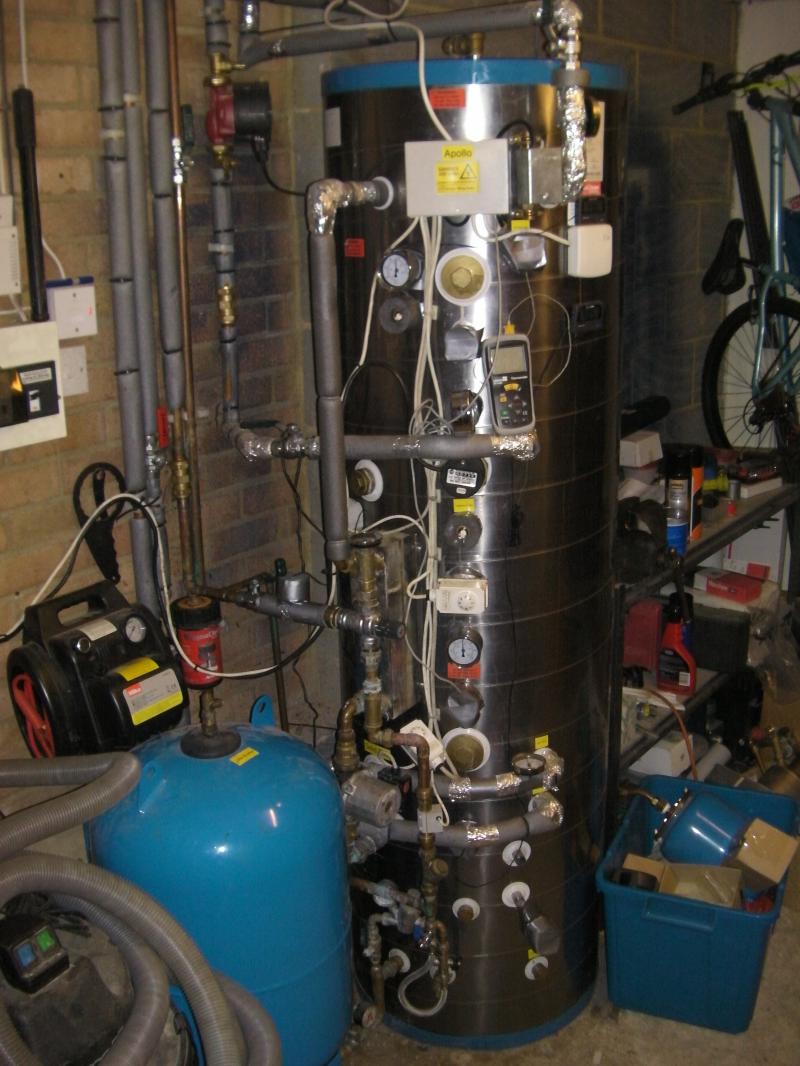But at least someone is actually trying to answer the OPs question - unlike the rest of you spending 10 (yes TEN pages) pages bickering.Having a combined feed and expansion pipe off the top may cause the cylinder to implode if it boils over. Tee of the combined pipe at the top off the cylinder and take a pipe to the bottom of the cylinder. Have a non-return valve in this new pipe. This tops up the cylinder at the bottom but prevents circulation through pipes. When blowing off water gets back into the cylinder. Cheap and easy.
This is the most dangerous thing I've ever read on here, by far!! It also would not comply with the Water Byelaws. Please don't take this nutters advice.
I'll offer some constructive suggestions to some of you - though I suspect those whom it's aimed at will fail to recognise themselves. I don't think it's too much of an exaggeration to say that the perception of plumbers amongst the general community isn't very positive. Plumbers are those people who arrive late, take one look at an installation before have a big "suck" and stating that something very expensive needs to be ripped out and replaced, turn up without the material they need even when they've already been and measured up, and so on - and I've met some of these people. I know there are a great many plumbers (the majority) who aren't like this, who know their stuff, charge fair prices, etc, etc. But people don't remember those.
There are a number of people posting in this thread (and others) with posts that make themselves appear completely and utterly untrustworthy. When someone makes a statement that they will never ever consider a particular technology no matter what, then that says that they are not prepared to offer a customer what is best for that customer's requirements - instead they will offer something that may well be second (or third) best. To go on at length that <some technology> cannot ever work when clearly it does for a great many people simply makes you look stupid and ignorant - see above about not being able to select the best option for any particular set of requirements. Also, when you have that attitude, people are likely to think that if there is a genuine reason for changing the system - that you are just doing it because you can't be arsed trying to understand what's already there.
There is a saying that if you can lead, lead; or if you can follow, follow; otherwise get out of the way. Adapting that, I'd suggest that when someone posts asking for help on something you don't want to be involved with, instead of getting in the way, just stay the f**k out of thread and let others who are prepared to help, help. Ten pages of old arguments is just getting in the way.
And I'm interesting in the original question because it is relevant to a future project where it will be a long run to the F&E tank and the opportunity to reduce the amount of pipework required would be welcome.
I am curious about the statements made by JonasX. I don't see why tee'ing the pipe to top and bottom of the tank will make any difference. If the tank boils then expansion into steam will push steam & water up the vent pipe (in the absence of a separate feed pipe). When the boiling is no longer sufficient, water will come back down that pipe and if it's cool then it will quench the boiling - at least to some extent, it depends on the quantities involved, and the capacity of the heat source that's causing the boiling.
The pipe is the same size whether it connects to the top or bottom of the tank, and I fail to see why tee'ing it into two tank connections will avoid potential problems if a large quantity of steam collapses quickly. I can see how letting the cold in at the base will reduce rapid quenching of the boiling, but the arrangement suggested doesn't prevent cold water also entering the tank at the top.
But the mention of it does bring to mind an amusing anecdote. If anyone doesn't want to read it then I won't be offended - just skip ahead and ignore it, don't complain about it because I'm not forcing you to read it.
Someone I know sells pumps for a living ...
Anyway, one job he got involved with was for a marmalade manufacturer. Marmalade and jam is often cooked in a partial vacuum to allow cooking at a lower temperature and avoid boiling off some of the aromatic oils. At one place, they'd had this big vacuum cooking pot built, and it had a poxy little valve in it - clearly they were only considering that they needed to admit air as fast as the vacuum pump could suck it out under fault conditions.This error was pointed out, but the "experts" claimed to have considered everything ... They didn't allow for a sudden temperature drop and associated condensing of steam, which they soon enough had - apparently it took some doing cleaning an industrial quantity of marmalade off the inside of the factory


